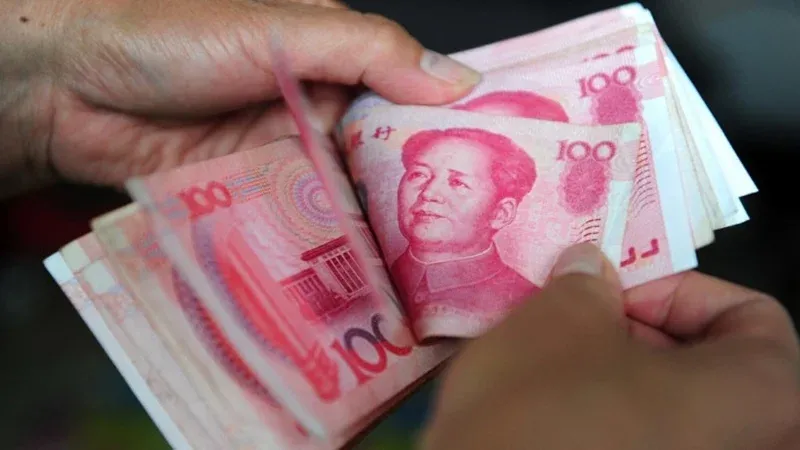China's Cash Revolution: How the World's Second-Largest Economy Went Nearly Cashless
From street vendors selling dumplings to luxury department stores, a remarkable transformation has swept across China that would astonish visitors from just a decade ago. Physical money—the coins jingling in pockets and crisp banknotes changing hands—has virtually vanished from daily life in the world's second-largest economy. What emerged in its place is a digital payment ecosystem so comprehensive that even beggars on the street now accept QR code payments.
The Numbers Behind the Digital Shift
The statistics paint a stunning picture of China's cashless revolution. According to data from the People's Bank of China, mobile payments in the country reached 527 trillion yuan ($83 trillion) in 2022, representing a 4,000% increase from 2013. To put this in perspective, that's roughly four times China's entire GDP flowing through digital payment channels.
More telling is how this affects everyday transactions. A 2023 survey by the China Payment & Clearing Association found that 86% of Chinese consumers use mobile payments for daily purchases, while only 12% regularly carry cash. In major cities like Beijing and Shanghai, the percentage of cashless transactions exceeds 95% for retail purchases under 500 yuan.
The Twin Titans: Alipay and WeChat Pay
Two platforms dominate China's digital payment landscape with an iron grip that would make traditional banks envious. Alipay, launched by Alibaba in 2004, and WeChat Pay, introduced by Tencent in 2013, together control over 90% of China's mobile payment market.
Alipay processes over 1.7 billion transactions daily, while WeChat Pay—integrated into China's ubiquitous messaging app—handles more than 1 billion daily transactions. These platforms transformed smartphones into digital wallets, allowing users to pay for everything from taxi rides to hospital bills with a simple QR code scan.
The integration runs so deep that many Chinese citizens haven't touched physical money in months. Street food vendors, traditionally cash-only businesses worldwide, now exclusively accept digital payments. Even Buddhist temples have adapted, with monks accepting digital donations through QR codes placed beside traditional donation boxes.
Government Push and Digital Currency Evolution
Beijing's support has been crucial in accelerating this transformation. The government actively promoted digital payments as part of its broader digital economy strategy, seeing mobile payments as a way to increase financial inclusion and reduce the costs of cash handling.
The People's Bank of China has taken this further with the introduction of the Digital Currency Electronic Payment (DCEP), also known as the digital yuan. Unlike cryptocurrencies, this central bank digital currency gives the government direct oversight of all transactions while maintaining the convenience of digital payments. Pilot programs in major cities have shown promising adoption rates, with over 260 million users and 8.3 billion yuan in transactions as of late 2023.
The Ripple Effects
This cashless revolution has transformed Chinese society in unexpected ways. Small businesses no longer need to worry about counting cash, making change, or bank runs to deposit daily earnings. Tax collection has become more efficient, and financial inclusion has expanded to rural areas where traditional banking infrastructure was limited.
The environmental impact is significant too. The reduction in cash production, transportation, and disposal has decreased the carbon footprint associated with physical currency. Additionally, the decrease in bank branch visits for cash transactions has reduced energy consumption in the financial sector.
Challenges in Paradise
However, the cashless society isn't without its problems. Privacy concerns have grown as digital transactions create detailed records of every purchase. The elderly and technologically challenged face exclusion from an increasingly digital economy, prompting government regulations requiring businesses to accept cash.
Cybersecurity risks have also intensified. Payment fraud, while relatively rare, can have devastating consequences when people's entire financial lives exist in digital form. The platforms' dominance has raised antitrust concerns, leading to increased regulatory scrutiny from Chinese authorities.
Looking Forward
China's near-elimination of physical currency represents more than a technological shift—it's a glimpse into the future of money itself. As other countries watch and learn from China's experience, the model of seamless digital payments integrated into daily life is spreading globally.
The transformation from a cash-dependent society to a digital-payment powerhouse in less than two decades demonstrates how quickly fundamental economic behaviors can change when technology, government policy, and consumer needs align. For China, the age of coins and banknotes hasn't just ended—it's been relegated to history.
